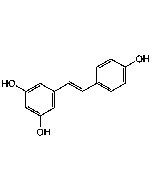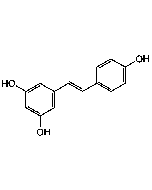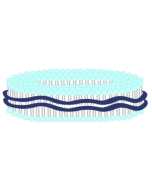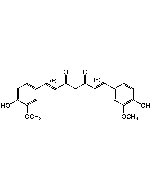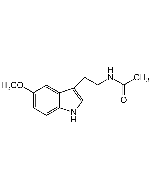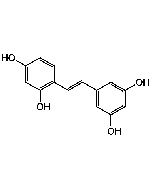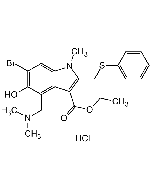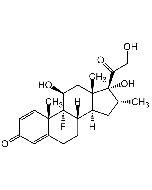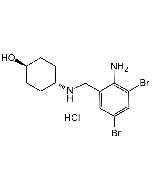Cookie Policy: This site uses cookies to improve your experience. You can find out more about our use of cookies in our Privacy Policy. By continuing to browse this site you agree to our use of cookies.
Innaxon
Resveratrol Lipodisq™ Sterile Solution
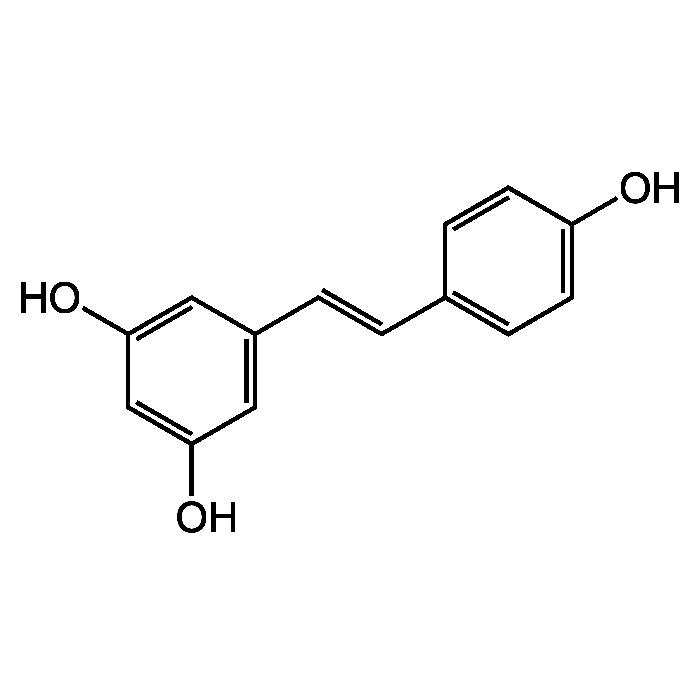
| Product Details | |
|---|---|
| Synonyms | trans-3,4’,5-Trihydroxystilbene; trans-Resveratrol; (E)-Resveratrol; 3,4’,5-Stilbenetriol |
| Product Type | Chemical |
| Properties | |
| Formula |
C14H12O3 |
| MW | 228.2 |
| CAS | 501-36-0 |
| RTECS | CZ8987000 |
| Purity Chemicals | ≥95% (HPLC) |
| Appearance | Light amber coloured clear aqueous solution |
| Solubility | Soluble in water, PBS, Tris and other physiological solutions as formulated in a proprietary, thermostable, aqueous lipid nanoparticulate formulation (Lipodisq). |
| Reconstitution | Avoid the use of buffers with divalent ions such as Ca or Mg or pH <6.5 or >8.0, which can cause particle instability. Unformulated resveratrol is soluble in DMF or DMSO. |
| Formulation | Liquid, detergent-free discoidal nano-formulation made of styrene-maleic acid lipid particles (SMALP), lecithin and sterile water. |
| Concentration | 1mg/ml (0.1% w/vol) |
| Biological Activity |
Discoidal nano-particles can incorporate hydrophobic, poorly water-soluble compounds, such as lipids, lipoproteins and glycolipids. - Cell culture tested (human macrophage cell line) (MTT). - Recommended starting dilution: 1:200 or higher. - Optimal working concentrations depend on the applications and need to be determined. - Published procedures using Lipodisq formulations (Curcumin and IAXO TLR4 antagonists) in vivo rodent models at 3-10mg/kg. Recommended route of administration is subcutaneous (s.c.) with oral or nasal application as a possible alternative, which needs to be optimized. |
| Declaration | Manufactured by Innaxon. |
| Other Product Data |
Click here for Original Manufacturer Product Datasheet: Our product description may differ slightly from the original manufacturers product datasheet.
|
| InChi Key | LUKBXSAWLPMMSZ-OWOJBTEDSA-N |
| Smiles | OC1=CC=C(\C=C\C2=CC(O)=CC(O)=C2)C=C1 |
| Shipping and Handling | |
| Shipping | AMBIENT |
| Short Term Storage | +4°C |
| Long Term Storage | +4°C |
| Handling Advice |
Keep sterile. Avoid skin and eye contact. |
| Use/Stability | Stable for at least 1 year after receipt when stored at +4°C. |
| Documents | |
| MSDS |
 Download PDF Download PDF |
| Product Specification Sheet | |
| Datasheet |
 Download PDF Download PDF |
- Resveratrol Lipodisq Sterile Solution is a ready-to-use nano-formulated aqueous solution.
- Potent phenolic antioxidant found in grapes and red wine. Eicosanoid synthesis and platelet aggregation inhibitor. Chemopreventive. Specific inhibitor of cyclooxygenase-1 (COX-1). Anti-inflammatory, anticancer and antiproliferative compound. Apoptosis and autophagy inducer. Potent SIRT1 (sirtuin 1) activator. Senescence modulator. Cardioprotective and neuroprotective. Adipogenesis inhibitor.
- Resveratrol Lipodisq is based on a nanoparticle (11-40nm) drug delivery system comprising a discoidal phospholipid bilayer membrane stabilized by a chaperone molecule annulus. Internal properties of the phospholipid membrane support the disposition and stabilization of drug molecule candidates and preserve the native conformation of membrane molecules. The resulting encapsulated actives are rendered water-soluble and specialized for intra-cellular penetration/delivery via endosomal uptake mechanisms. Lipodisq solutions show a good safety profile and are suitable for in vitro and in vivo investigations.
- Antiviral Activity of Resveratrol against Human and Animal Viruses: Y. Abba, et al.; Adv. Virol. 2015, 184241 (2015)
- Can Resveratrol-Inhaled Formulations Be Considered Potential Adjunct Treatments for COVID-19? G.A. Rossi, et al.; Front. Immunol. 12, 670955 (2021)
- Role of Resveratrol in Prevention and Control of Cardiovascular Disorders and Cardiovascular Complications Related to COVID-19 Disease: Mode of Action and Approaches Explored to Increase Its Bioavailability: N. Gligorijevic, et al.; Molecules 26, 2834 (2021)
- Resveratrol and Pterostilbene Inhibit SARS-CoV-2 Replication in Air–Liquid Interface Cultured Human Primary Bronchial Epithelial Cells: B.M. Ter Ellen, et al.; Viruses 13, 1335 (2021)
- COVID-19: immunopathology, pathophysiological mechanisms, and treatment options: L.E. Van Eijk, et al.; J. Pathol. 254, 307 (2021)
- Targeting Multiple Signal Transduction Pathways of SARS-CoV-2: Approaches to COVID-19 Therapeutic Candidates: S. Fakhri, et al.; 26, 2917 Molecules (2021)
- Bioactivity, bioavailability, and gut microbiota transformations of dietary phenolic compounds: implications for COVID-19: P.R. Augusti, et al.; J. Nutr. Biochem. 97, 108787 (2021)
- Resveratrol as an Adjunctive Therapy for Excessive Oxidative Stress in Aging COVID-19 Patients: M.-T. Liao, et al.; Antioxidants 10, 1440 (2021)
- A comprehensive guide to the pharmacologic regulation of angiotensin converting enzyme 2 (ACE2), the SARS-CoV-2 entry receptor: M. Oz, et al.; Pharmacol. Ther. 221, 107750 (2021)
- Molecular Mechanisms of Possible Action of Phenolic Compounds in COVID-19 Protection and Prevention: N. Gligorijevic, et al.; Int. J. Mol. Sci. 22, 12385 (2021)
- Therapeutic Potential of Resveratrol in COVID-19-Associated Hemostatic Disorders: R. Giordo, et al.; Molecules 26, 856 (2021)
- The Importance of Nutraceuticals in COVID-19: What’s the Role of Resveratrol? E. Domi, et al.; Molecules 27, 2376 (2022)
- COVID-19: Immunology, Immunopathogenesis and Potential Therapies: A. Bhardwaj, et al.; Int. Rev. Immunol. 41, 171 (2022)
General References for Lipodisq™ Technology:
- Responsive Hydrophobically Associating Polymers: A Review of Structure and Properties: S.R. Tonge & B.J. Tighe; Adv. Drug Deliv. Rev. 53, 109 (2001)
- Detergent-free formation and physico-chemical characterization of nanosized lipidpolymer complexes: Lipodisq; M.C. Orwick, et al.; Angew. Chem. 51, 4653 (2012)
- Physicochemical Characterization, Toxicity and In Vivo Biodistribution Studies of a Discoidal, Lipid-Based Drug Delivery Vehicle: Lipodisq Nanoparticles Containing Doxorubicin: M.L. Torgersen, et al.; J. Biomed. Nanotechnol. 16, 41 (2020)
- Applications of Synthetic Polymer Discoidal Lipid Nanoparticles to Biomedical Research: M. Tanaka; Chem. Pharm. Bull. 70, 507 (2022)
- Mechanisms of Formation, Structure, and Dynamics of Lipoprotein Discs Stabilized by Amphiphilic Copolymers: A Comprehensive Review: P.S. Orekhov, et al.; Nanomaterials 12, 361 (2022)






